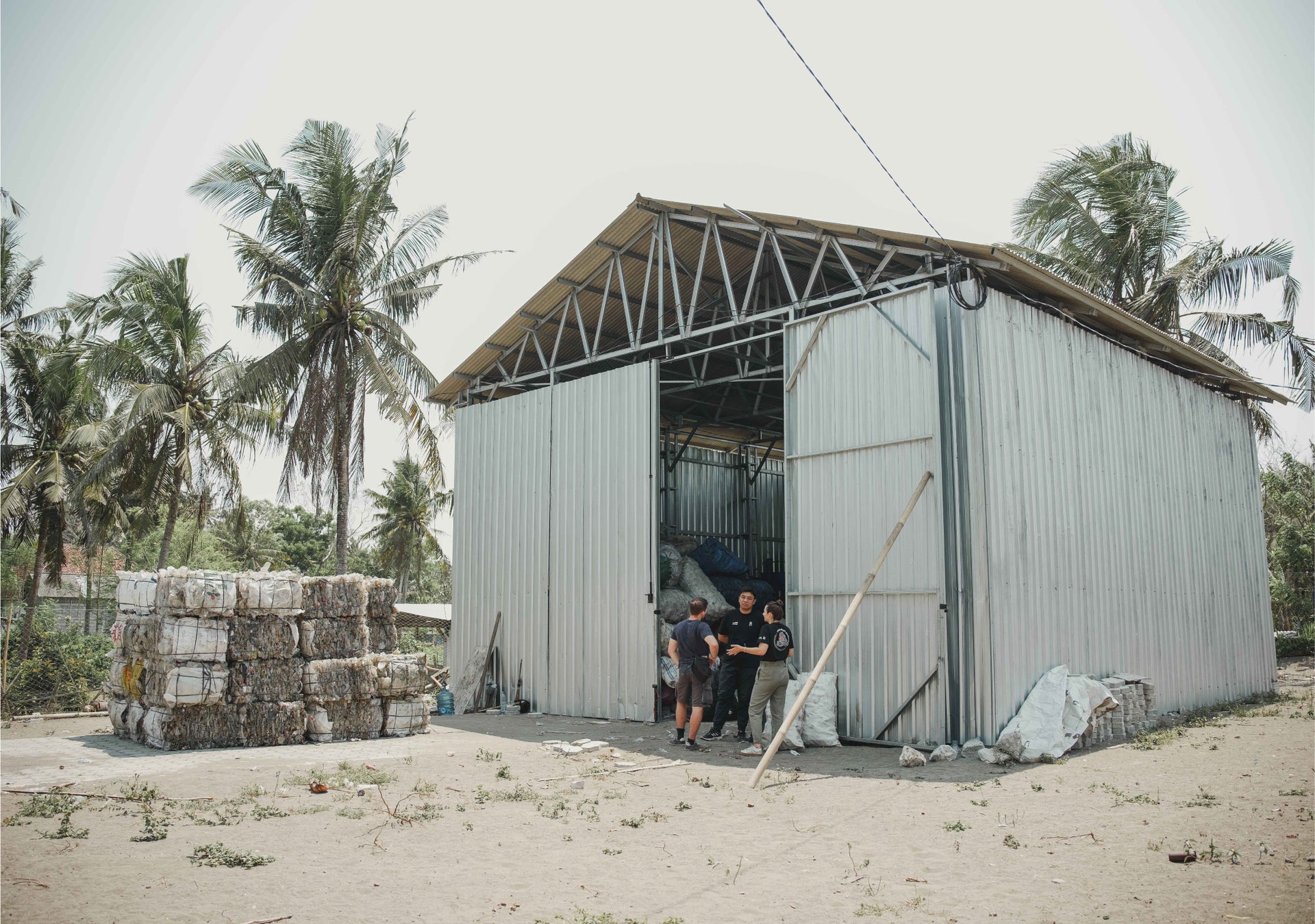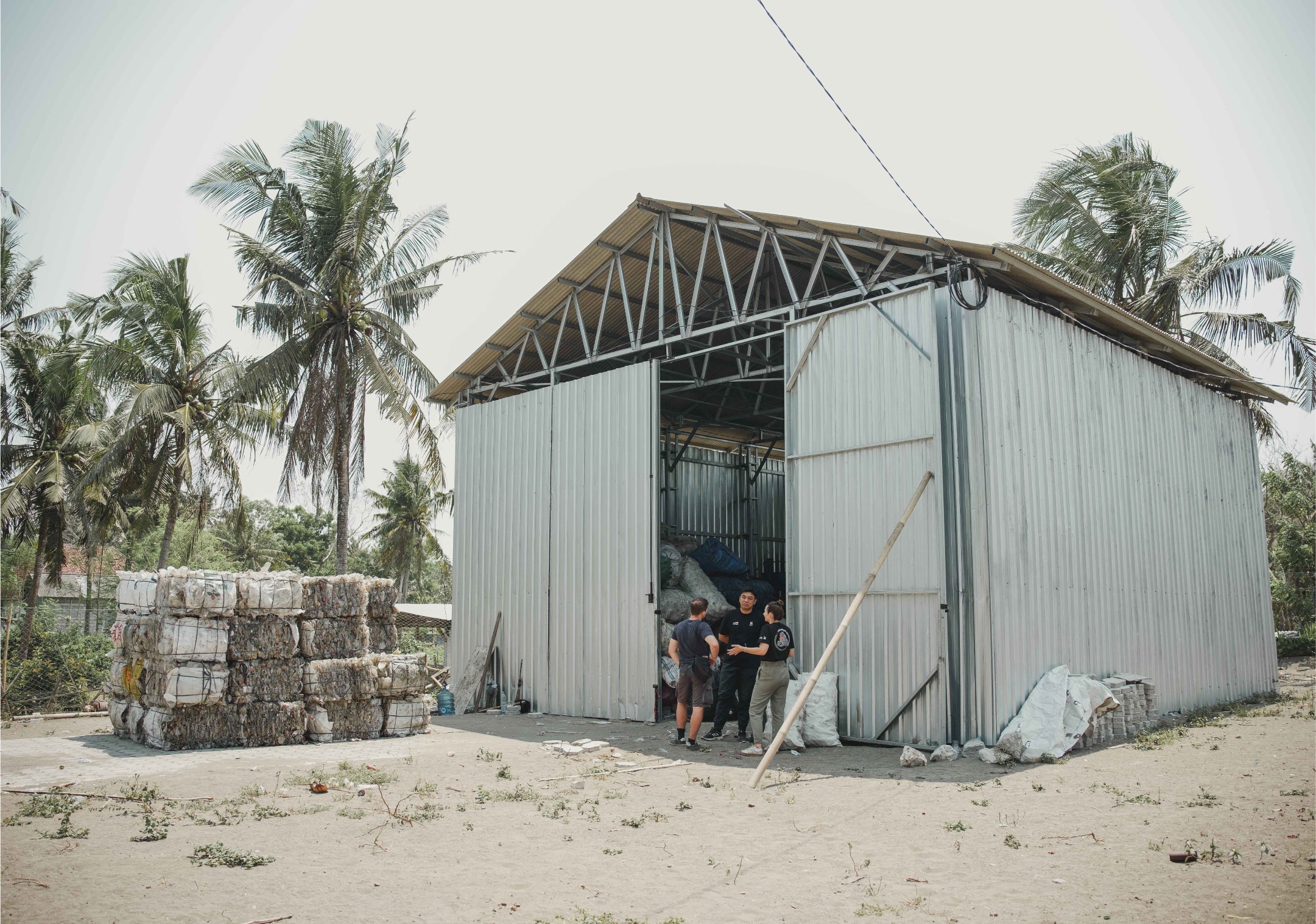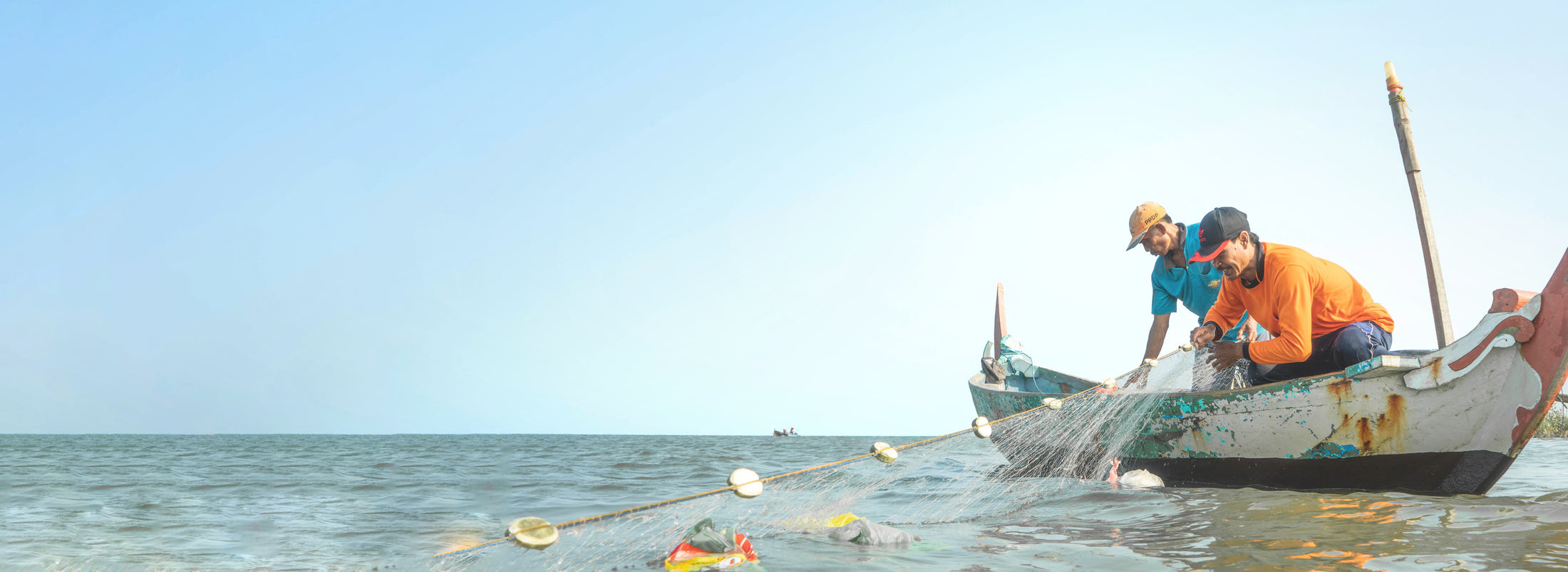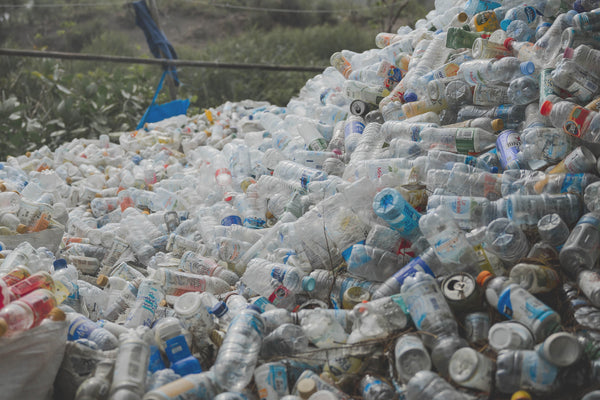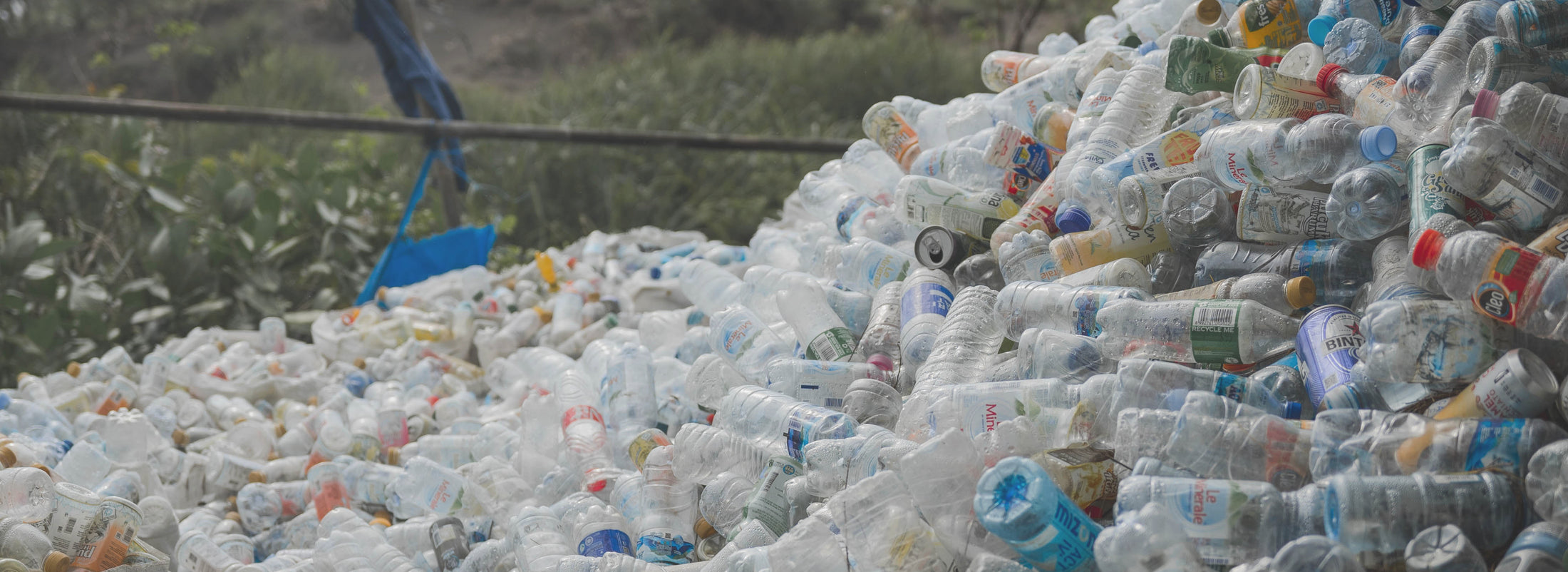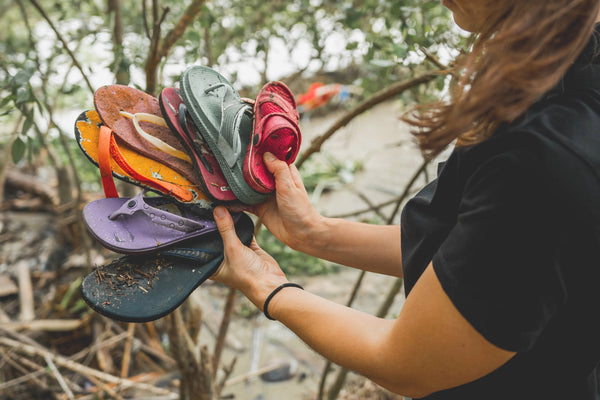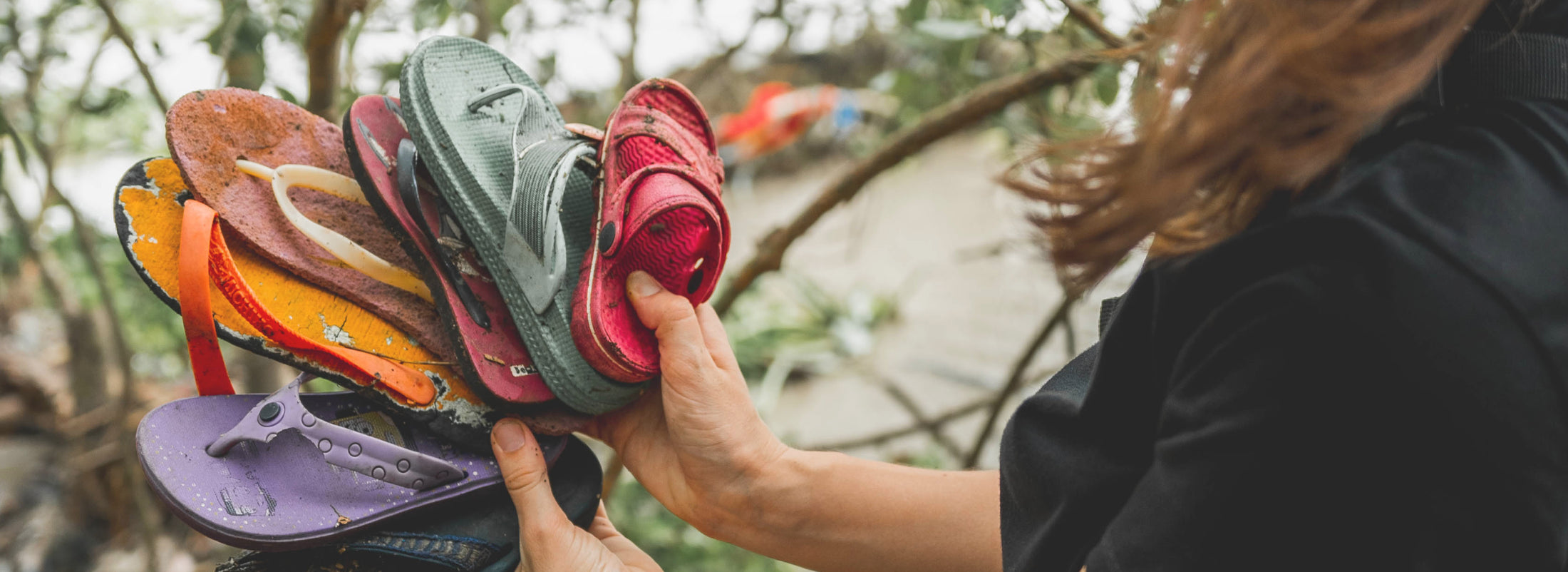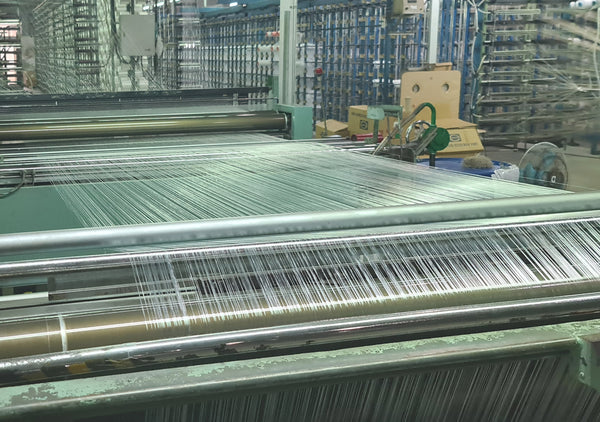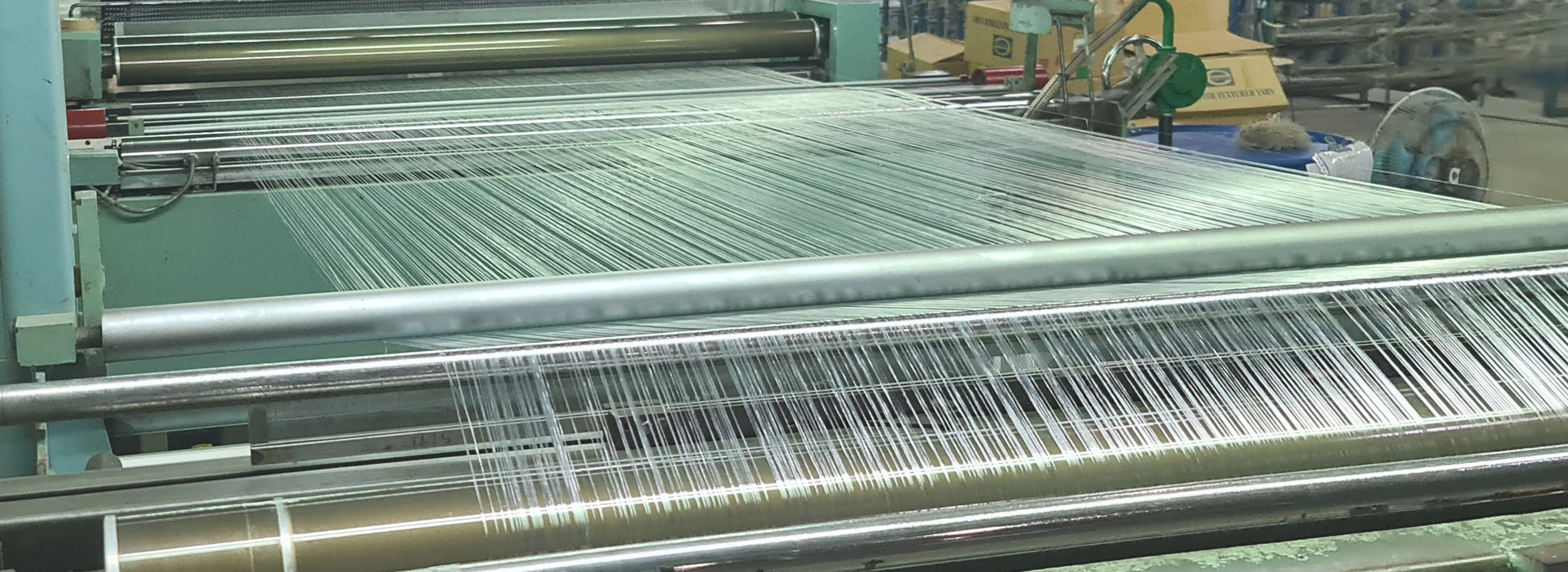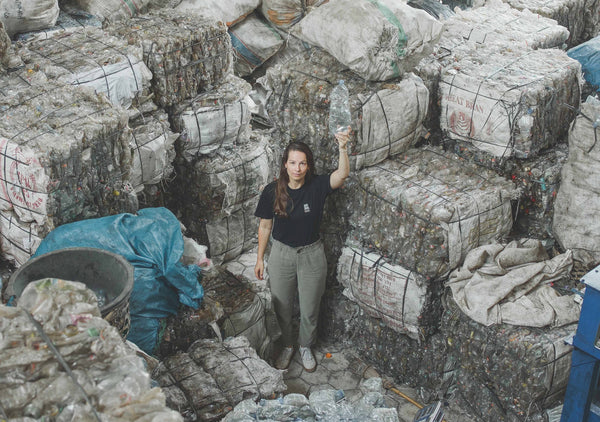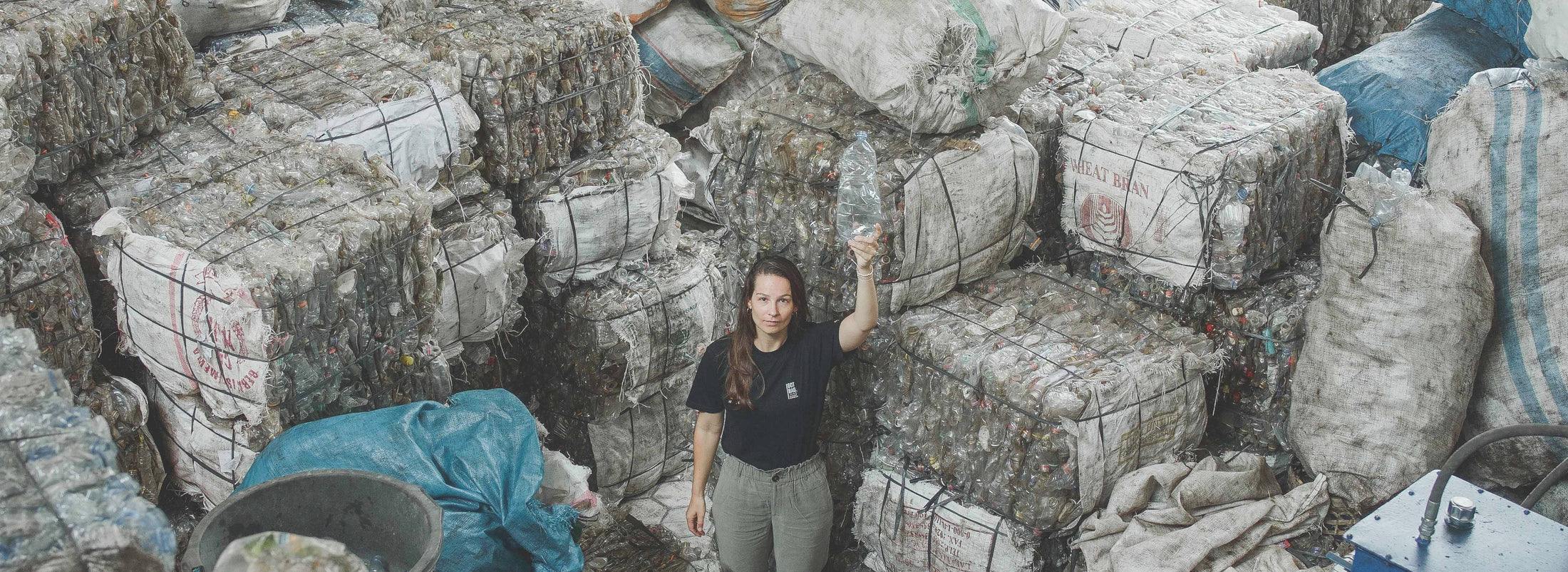PRO PACK
We are in a constant state of evolution, working to address the challenges and limitations of our mission as best as we can. Here, you'll find out where we encounter our limits and how we approach them.
LIMIT: OCEAN PLASTIC
In 2018, we initiated a fishing-for-litter project in Indonesia, where fishermen collected plastic waste as bycatch directly from the sea. Over time, the clean-up program has evolved. Collecting plastic directly from the sea is increasingly costly and inefficient. The majority of the efforts now focuses on collecting plastic waste from coastal areas on land, including beaches, rivers, mangroves, and villages. This approach has a significantly larger impact as it prevents plastic from entering the ocean in the first place. Plastic that has already entered the ocean is difficult to remove entirely because it is distributed by wind and waves, degrades into smaller pieces, and sinks to the ocean floor. Therefore, today plastic waste collected as bycatch from the sea by our network of fishermen became one of many different ways it is gathered.
By focusing the collection efforts on coastal land areas and at river deltas, the program effectively contributes to reducing plastic pollution at its source, thus also reducing the amount of plastic in the ocean.
In 2023, about 12% of the plastic collected by GOT BAG Indonesia came directly from the sea and waterways. We have given the plastic waste its own name – Ocean Impact Plastic. This distinguishes it from the term "ocean plastic", which is associated only with plastic collected from the oceans while “Ocean Impact Plastic” emphasizes the positive impact on the ocean by preventing plastic from entering it and potentially negative impact on the marine ecosystem.
LIMIT: SCALING
We are continuously enhancing the clean-up operations. However, the quantities of plastic collected do not match the needs of our fabric production. The amount of PET collected through the clean-up program varies significantly due to seasonality and market demand. When the market price for PET is high, fewer bottles end up in the environment, as they are collected earlier.
To ensure a steady supply of rPET for yarn spinning and fabric production, we rely on both the clean-up program and the local collection network of our Ocean Bound Plastic certified recycling partner in Surabaya, Java. Over the past year, we have seen many PET collectors growing in the clean-up region and Indonesia. We see this as a positive development as some plastic types have become valuable and offer an economic opportunity for people with the benefit that less waste stays in the environment.
We anticipate that the quantities and share from other collection networks will continue to grow as there is less PET available and competing for it against others does not align with our mission. However, we remain committed to scaling up our clean-up operations in Indonesia. We believe that assigning economic value to plastic waste is crucial for creating long-term impact, even if we cannot use all of it in our production.
LIMIT: RECYCLING ALL TYPES OF PLASTIC
At the clean-up program, the communities collect every type of plastic that they can find, regardless of shape, size, or condition, as any plastic waste can harm nature. However, plastic waste comes in many colors and chemical structures. For our Ocean Impact Plastic fabric, we can currently only use PET bottles, which made up 12% of the collected waste in 2023. The majority of the collected plastic however consists of low-value plastic, such as multi-layer or compound plastics or heavily degraded or unidentifiable waste.
Currently, GOT BAG Indonesia sends non-recyclable plastics to cement plants, where they replace fossil fuels in energy production. Other recyclable plastics, not suitable for our bag production, are either sent to recycling partners or stored in our warehouse until appropriate recycling solutions are found. Due to limited recycling technologies and partners locally, it takes time to find the best solution for as many types of plastic as possible. We strictly avoid landfill disposal, as they are often poorly managed and prone to leakage in Indonesia. Consequently, a significant portion of the collected plastic goes to thermal recovery, as currently, not many types qualify for incorporation into our products.
LIMIT: USE OF COLLECTED PLASTIC FROM THE CLEAN-UP PROGRAM FOR PRODUCT MANUFACTURING
The communities of the clean-up program in Indonesia collect all types of plastic materials. However, not all types of plastic are suitable for recycling for yarn or components. Moreover, only some of the plastics required for our products can be collected through the clean-up program. For instance, the material for our luggage hard shells and sunglasses – recycled polycarbonate – is sourced from our recycling partner on the island of Java, as polycarbonate water containers are rarely found in the environment of the collection efforts of the clean-up program.
Additionally, products like backpacks and bags consist of many components beyond the main material, which we cannot produce ourselves but source from supplying partners. Whenever possible and available, we choose recycled components from the market.
LIMIT: PET YARN RECYCLING
Not all PET plastic collected by GOT BAG Indonesia is suitable for yarn production. To spin high-quality yarn from recycled PET, it is necessary to have a well-sorted, homogeneous batch of high-quality PET. Bottles that are too degraded by sun and saltwater or contaminated with oil cannot be recycled into yarn. We are exploring alternative uses for this material, such as downcycling into roofing tiles.
Additionally, certain colors are sorted out, as we cannot dye dark PET into lighter colors. Such materials are sold to recyclers who make other products.
LIMIT: SHARE OF RECYCLED COMPONENTS
From day one, we have strived to make our products from recycled Ocean Impact Plastic. So far we recycle PET. However, many components such as buckles, webbings, zippers, mesh, and foams cannot be made from PET. Therefore, we use other recycled components from suppliers in the market for these items.
Whenever possible, we source and select recycled materials for our products. We use most components from recycled materials, with the majority being post-consumer recycled content. However, we have not yet solved the challenge of sourcing foams (PE and PU) and zipper sliders from recycled materials.





